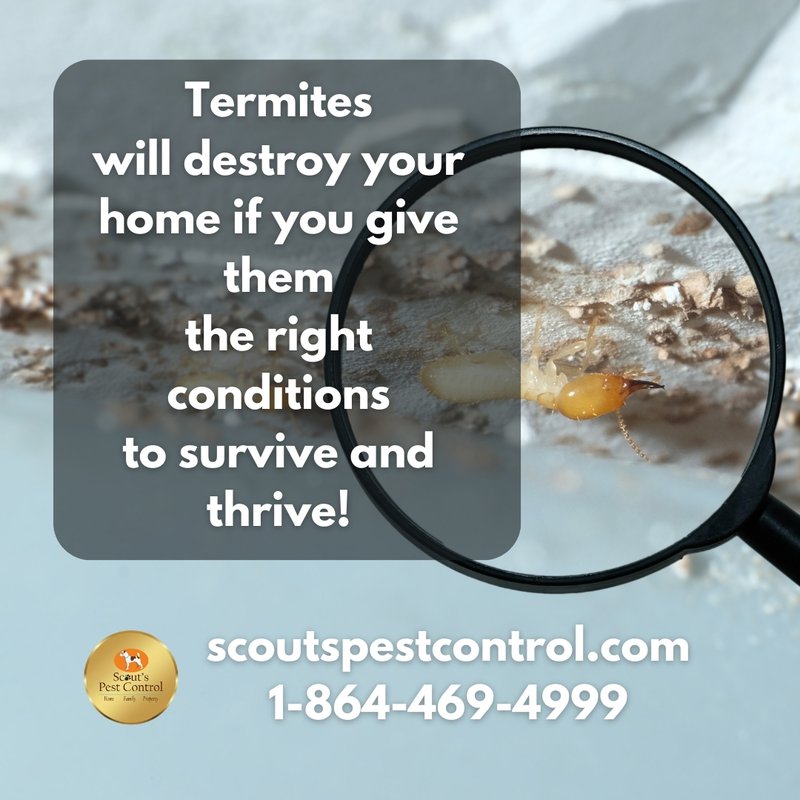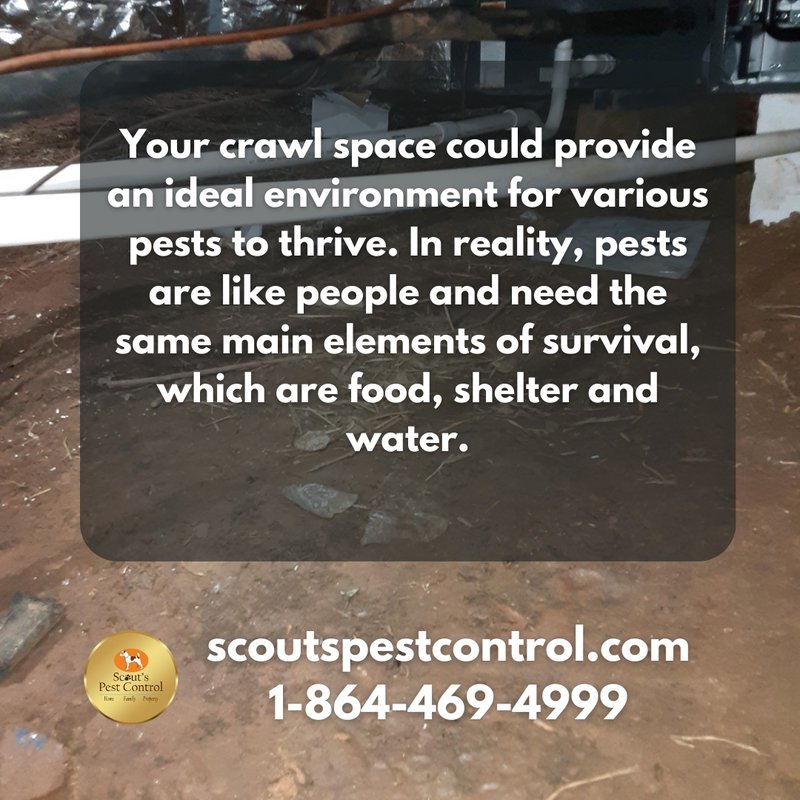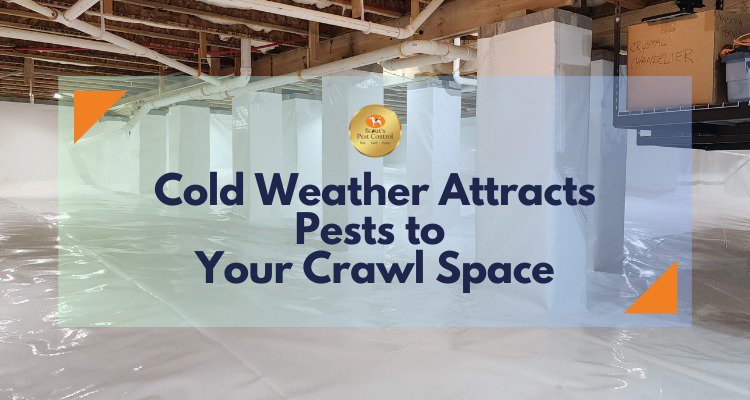Crawl spaces are frequently neglected in homes, yet when not properly maintained, they can easily turn into a haven for pests. While many people focus on dealing with pests during spring and summer, it’s important to remember that pests can still be a problem in the crawl space during winter months.
This is why you need to consider encapsulating your crawl space to have all year round protection, especially in colder weather. It is crucial to familiarize yourself with various pest species that can be drawn to your surroundings and will infiltrate if the circumstances are ideal for their survival. This is why pest control is not just about pest treatment but also detection and prevention. We should explore the common types of pests that frequently infiltrate crawl spaces, the significance of pest control in these areas, and the critical nature of encapsulating your crawl space.
Pests are commonly found in crawl spaces.

Your crawl space could provide an ideal environment for various pests to thrive. In reality, pests are like people and need the same main elements of survival, which are food, shelter and water. The issue here is that your crawl space if not encapsulated will offer these conditions that are perfect for pests to survive and thrive. Here are a few reasons why these spaces are so attractive to pests:
- Moisture: Crawl spaces tend to be damp and humid, creating the perfect breeding ground for pests like termites, cockroaches, and rodents.
- Darkness: Many pests prefer dark and secluded areas, making crawl spaces an inviting hiding spot.
- Access Points: Crawl spaces often have multiple entry points, such as vents or cracks in the foundation, making it easy for pests to find their way inside.
These factors make crawl spaces a prime target for pest infestations. Therefore, It’s important to regularly inspect and maintain your crawl space to prevent these unwanted visitors from taking up residence.
The Types Of Pests Invading Crawl Space

Your crawl space can become a breeding ground for various pests, posing a serious threat to the structural integrity of your home. Winter time is a particularly important time to prevent pests. Some of the most common pests found in crawl spaces include:
- Rodents: Mice and rats are attracted to crawl spaces as they offer shelter and a potential food source. They are especially more prevalent in the winter months as they seek protection from the elements.
- Insects: Ants, termites, cockroaches, spiders, and other insects find their way into crawl spaces through small cracks and openings.
- Mosquitoes: Standing water in crawl spaces can become a breeding ground for mosquitoes, leading to an increased risk of mosquito-borne diseases.
- Mold and Mildew: Excessive moisture in crawl spaces promotes the growth of mold and mildew, which can cause health issues for residents.
Once these pests make their way into your space, they have the ability to reproduce at an alarming rate. This turns a minor inconvenience into a major issue, leading to unforeseen financial consequences that you may not have anticipated.
Importance of Pest Control in Crawl Spaces

When pests gain a foothold in your crawl space, the problems that can develop pose risks on multiple levels. As a consequence, pest control is essential in crawl spaces to prevent infestations from spreading throughout the home. There are serious implications of ignoring this which can manifest into severe implications as follows:
- Health Risks: Pests such as rodents and insects carry diseases that can be transmitted to humans. By controlling pests in crawl spaces, you reduce the risk of exposure to these harmful pathogens.
- Structural Damage: Termites and other wood-destroying pests can wreak havoc on the structural integrity of your home if left unchecked. Regular pest control measures help prevent costly repairs down the line.
- Allergies and Respiratory Issues: Mold spores present in damp crawl spaces can trigger allergies and respiratory problems for individuals living in the house.
Considering these implications, it is crucial to prioritize the protection of your crawl space even more. No one wants to be hit by a large financial cost due to trying to cut costs. Unfortunately, there is an increasing concern among builders and construction professionals who often prioritize cost-cutting over quality, even for relatively new homes.
The Benefits of Crawl Space Encapsulation
There are obviously some major benefits of encapsulation, and it is not just the financial benefits. However, it is important to understand what encapsulation of your crawl space means and how it is beneficial.
Crawl space encapsulation is the process of sealing off the crawl space from outside elements. One part of this process often involves using a strong polyethylene barrier to protect the ground in the crawl space. This barrier is then extended to shield not only the walls but also the ceiling of the crawl space. To ensure utmost efficiency, the seams of this barrier are carefully sealed using special tapes. Additionally, for enhanced moisture control, a dehumidifier is sometimes installed. Moreover, the installation of vent covers can be a valuable addition to the encapsulation process, as they effectively prevent the intrusion of external air into the area. This further enhances the overall efficiency and effectiveness of the encapsulation.
Here are a few reasons why you should consider encapsulating your crawl space:
- Moisture Control: By encapsulating your crawl space, you create a barrier that prevents moisture from entering. This helps to control humidity levels and reduces the risk of mold and mildew growth.
- Energy Efficiency: Encapsulating your crawl space can improve energy efficiency by preventing air leaks and reducing the workload on your HVAC system.
- Pest Prevention: A properly encapsulated crawl space acts as a deterrent for pests, making it more difficult for them to enter your home.
- Improved Indoor Air Quality: With reduced moisture and mold growth, encapsulated crawl spaces contribute to better indoor air quality, promoting a healthier living environment.
Final Thoughts
If you want to protect your greatest investment in life, then taking proactive measures to control pests in your crawl space is essential for maintaining a pest-free home and ensuring the well-being of your family. Moreover, the money you will save in the long term is quite substantial and can often offset some of the costs over time.
Consider encapsulating your crawl space to reap the benefits of improved moisture control, energy efficiency, pest prevention, and indoor air quality. Don’t let these hidden areas become a breeding ground for unwanted guests! Contact Scouts Pest Control to book a free Crawl Space Inspection.
Remember, prevention is always better than dealing with an infestation later on. Contact Scouts Pest Control today 1-864-469-4999 or for professional assistance in eliminating damaging pests from your home or business.






